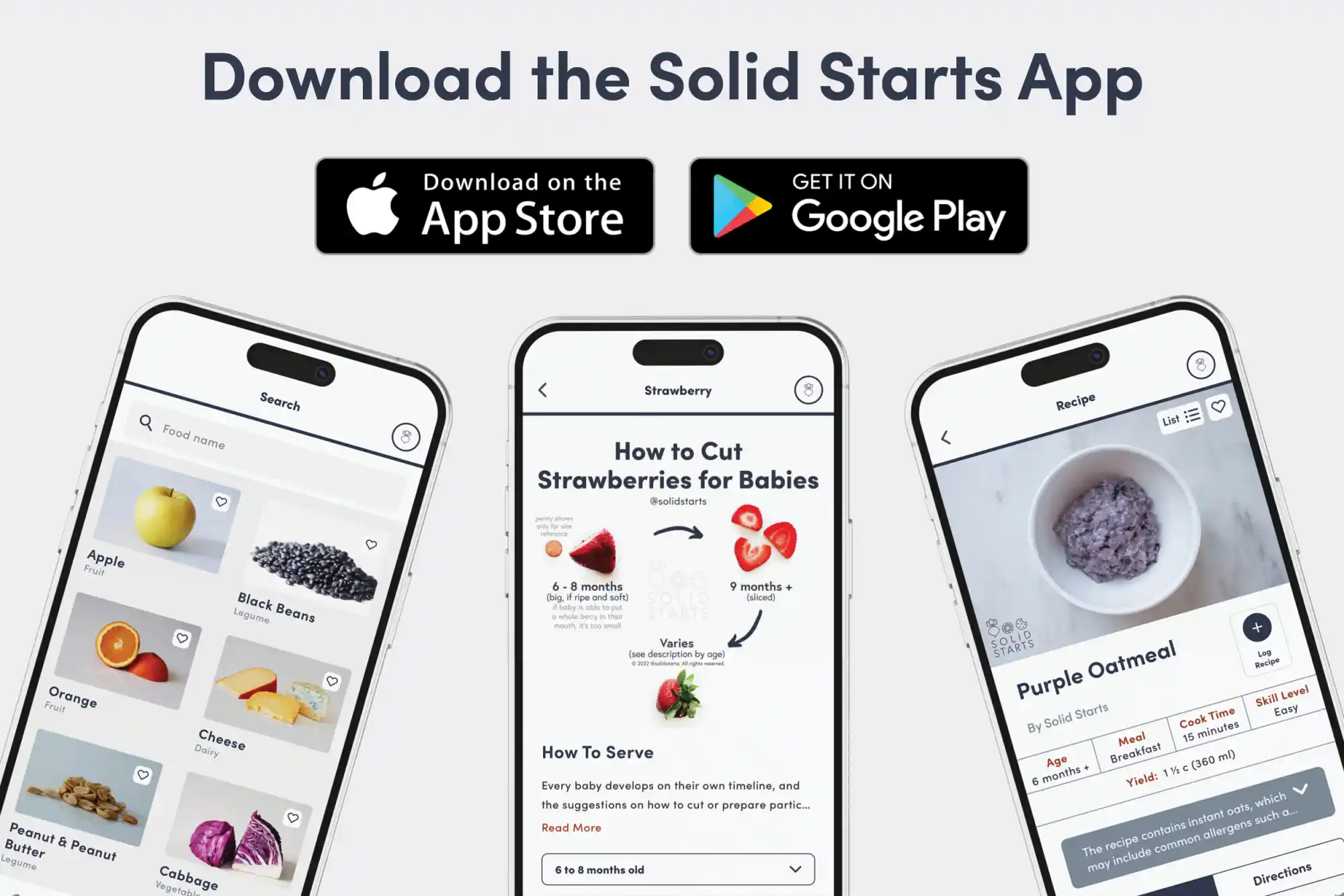Access our First Foods® Database in the Solid Starts App.
Learn moreFlaxseed (Linseed)
Seed
Age Suggestion
6 months
Iron-Rich
No
Common Allergen
No

When can babies have flaxseed?
Flaxseed may be introduced as soon as baby is ready to start solids, which is generally around 6 months of age.
Humans have been consuming flaxseed for thousands of years. Flaxseeds and flaxseed oil come from a plant, whose Latin name Linum usitatissimum means “very useful”—an understatement! Humans have been growing flax for centuries (cloth made of flax fibers was used by the Egyptians to embalm mummies) and the seeds have a long history in natural medicine strategies, such as Ayurveda, thanks to their powerful nutritional benefits.
How do you serve flaxseeds to babies?
Every baby develops on their own timeline, and the suggestions on how to cut or prepare particular foods are generalizations for a broad audience.
6 months old +:
Sprinkle ground flaxseeds (or flaxseed meal), or whole flaxseeds on top of soft foods like mashed vegetables, warm cereal, or yogurt that baby can scoop with their hands or eat from a pre-loaded spoon. Alternatively, stir flaxseeds or flaxseed meal into the batter for breads, pancakes, or muffins. You can also drizzle a small amount of flaxseed oil into baby’s food.
9 months old +:
Sprinkle ground flaxseeds (or flaxseed meal), or whole flaxseeds on top of soft foods like mashed vegetables, warm cereal, or yogurt that baby can scoop with their hands or eat from a pre-loaded spoon. Alternatively, break baked goods that contain flaxseed like bread, pancakes, or muffins into bite-sized pieces for baby to pick up with their developing pincer grasp.
18 months old +:
Add ground flaxseed (or flaxseed meal), whole flaxseeds, or a bit of flaxseed oil into the child’s food, including into energy balls or smoothies.
Videos
Is flaxseed a choking hazard for babies?
No. Flaxseeds present a low risk when safely prepared for a child’s age and developmental ability, though, in theory, an individual could choke on any food. To reduce the risk, prepare and serve flaxseeds in an age-appropriate way. Note that flaxseeds could pose a risk of aspiration, when something is breathed into the airway but does not block it. To reduce the risk of aspiration, avoid offering loose spoonfuls of dry flaxseed or flaxseed meal. As always, make sure you create a safe eating environment and stay within an arm’s reach of baby during meals.
Learn the signs of choking and gagging and more about choking first aid in our free guides, Infant Rescue and Toddler Rescue.
Are flaxseeds a common allergen?
No. Flaxseed allergy is rare. However reactions have been reported in both children and adults, some of which were serious. As you would when introducing any new food, start by offering a very small quantity at first. This is especially important if a child has any other pre-existing seed allergy. If there is no adverse reaction, gradually increase the quantity over future meals.
Are flaxseeds healthy for babies?
Yes. Flaxseed offers fiber, fat, and protein, as well as iron, plant-based omega-3 fatty acids (such as alpha linolenic acid), selenium, and zinc. Together, these nutrients support baby’s digestive system, energy, and growth. They also support the health of red blood cells, brain function and development, hormone health, taste perception, and immunity. Plus, flaxseeds offer antioxidants that support the body’s resilience and repair.
There is no concern when offering flax as one part of a varied diet. Just know that consuming flaxseed in great excess may theoretically cause health concerns.
★Tip: Ground flaxseed mixed with water can be used as an egg replacement in baked goods. To replace 1 egg, combine 1 tablespoon of finely ground flaxseed with 3 tablespoons of water, mix until gelatinous, and chill until ready to use in baking.
How do I calm my own nerves around starting solids?
Knowledge and practice with rescue maneuvers. Parents and caregivers who watch the choking and rescue videos in our Starting Solids bundle often share how confident they feel.
What utensils do I need to get started?
None! Put solid food directly on baby’s tray, plate, or bowl, then let baby explore with their hands. If you like, keep a baby spoon or fork nearby to help familiarize the child with utensils, but the skills to use them are not expected until early toddlerhood.
Our Team
Written by
Expert Tips Delivered to Your Inbox
Sign up for weekly tips, recipes and more!






